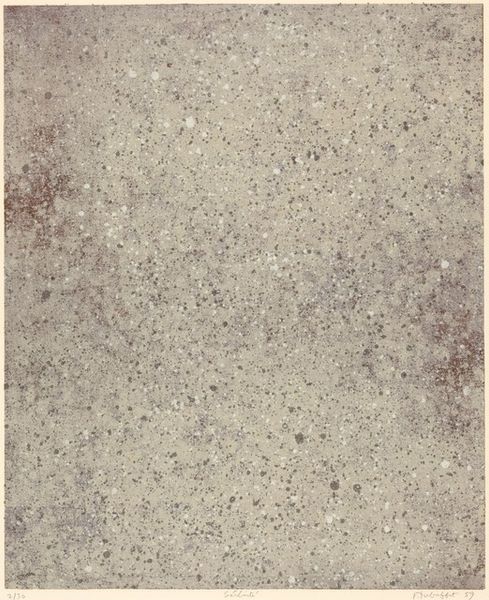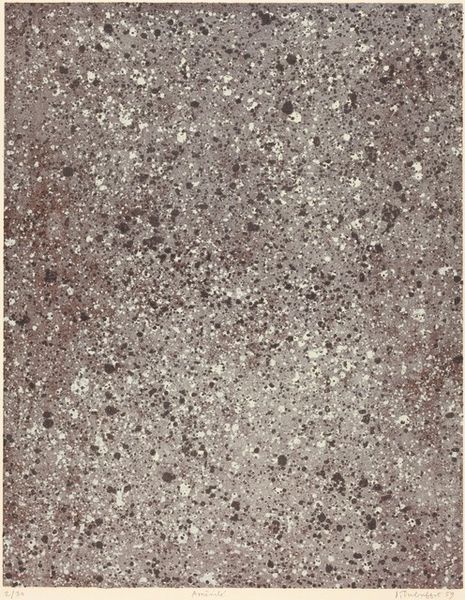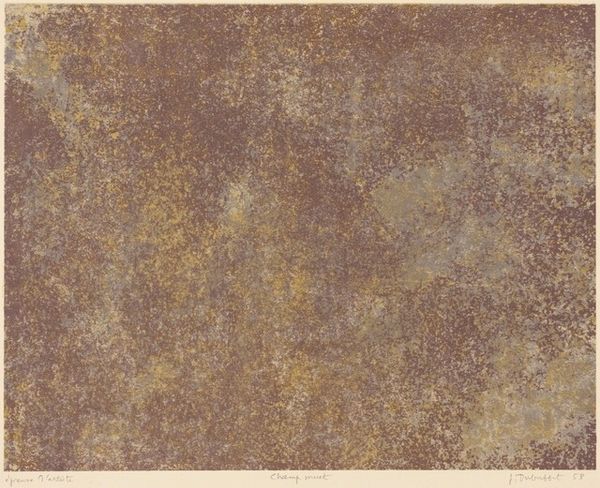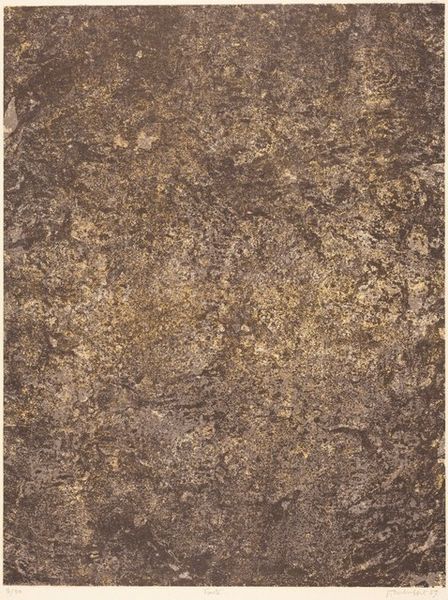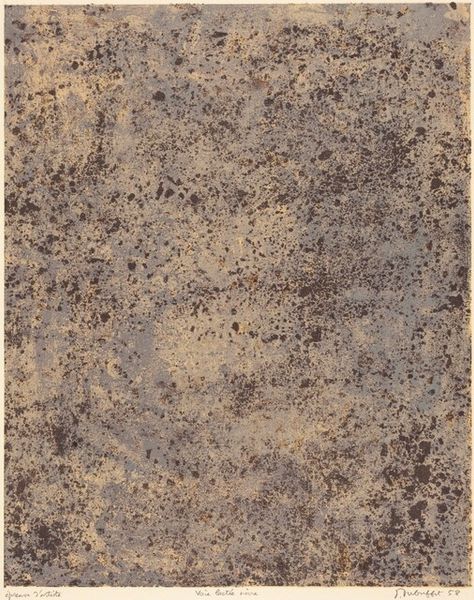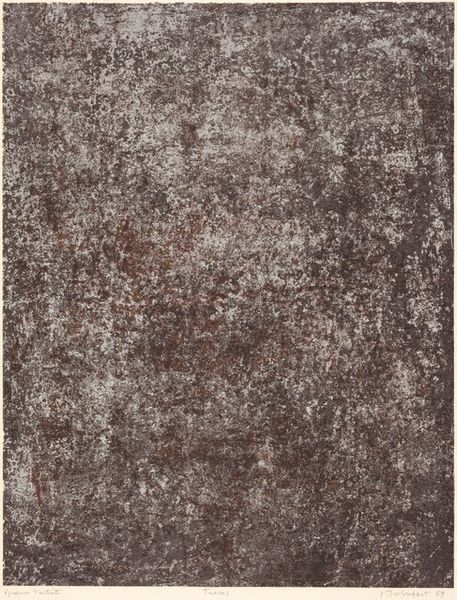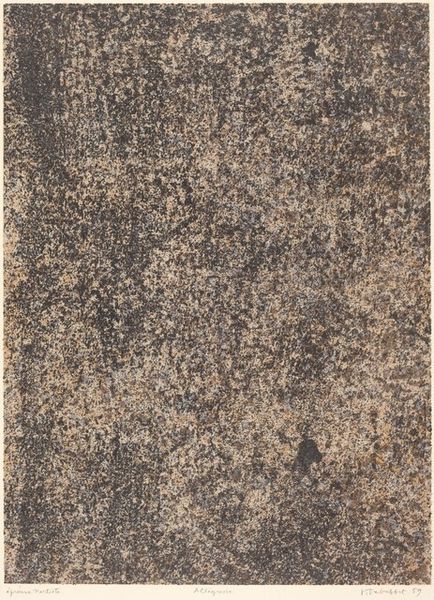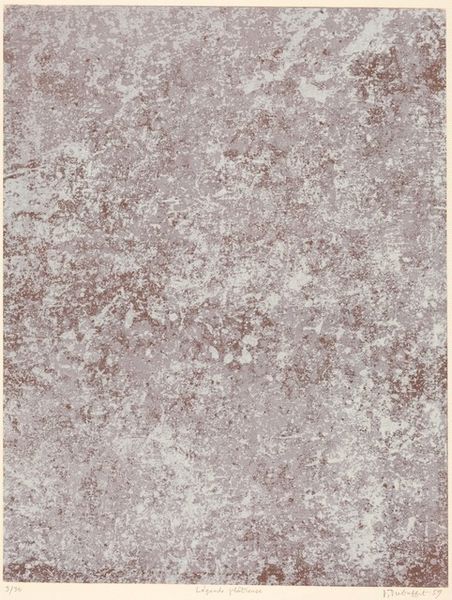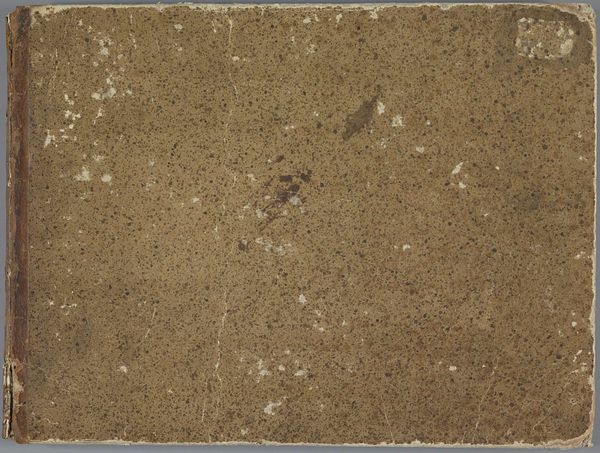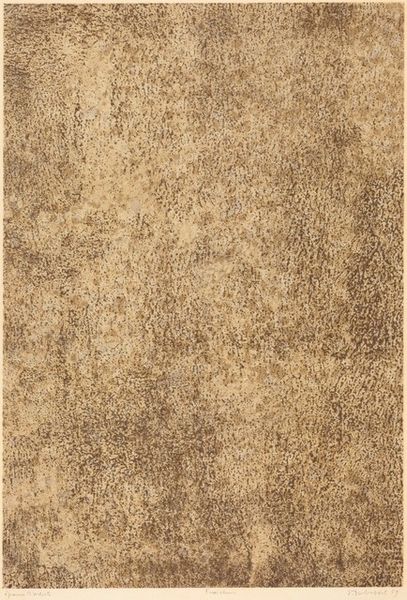
#
abstract-expressionism
#
organic
# print
#
pattern
#
organic pattern
#
matter-painting
#
organic texture
#
watercolor
#
monochrome
Copyright: National Gallery of Art: CC0 1.0
Curator: Jean Dubuffet’s "Scintillement," created in 1959, is a captivating print that invites us into a world of textured abstraction. Editor: My initial feeling is a sort of muted exuberance. It looks like a celebration viewed through fog. The monochromatic palette and seemingly random speckling create an atmosphere that's both festive and subdued. Curator: Dubuffet, particularly through his concept of "Art Brut," challenged conventional notions of beauty and artistic skill. The materials he employed, including common, unassuming elements, were essential to his mission. Consider, too, that it was created during a period of social upheaval, amid debates on mass production and consumer culture. Editor: Exactly, seeing the composition with the lens of Art Brut allows me to reframe my initial reading. Its monochrome is interesting because it subverts color hierarchies. In what other ways did Dubuffet aim to represent disenfranchised perspectives in that context? Curator: The use of materials and techniques—intentionally rejecting traditional fine art—is one facet, yes. By imbuing his work with an accessible yet aesthetically radical touch, Dubuffet sought to connect with a broader audience, challenging the art world's exclusive and classist structures. Editor: "Scintillement," or "shimmering" in English, implies movement and light, yet the visual impression is almost geological. Does the title, perhaps, offer an entry point to reconcile that friction? It reminds me of how theorists discuss texture as gendered—something "superficial" versus structural elements. How did gender influence the art-world expectations against which Dubuffet rebelled? Curator: That’s a thoughtful reading. Consider the gendered nature of labor too, with its reference to mundane or "lower" forms of artistic expression. The materiality, devoid of perspectival depth, flattens hierarchy. I think it resonates deeply, particularly today, questioning value systems. Editor: Looking at it this way, “Scintillement” ceases to be just an arrangement of speckles on a grey surface. It represents Dubuffet’s engagement with a political stance, democratizing art and giving voice to the previously unseen. Thank you for revealing these aspects of Dubuffet’s practice. Curator: Indeed. The way we interact with such works serves as a mirror, forcing us to reassess cultural, social, and economic realities.
Comments
No comments
Be the first to comment and join the conversation on the ultimate creative platform.
